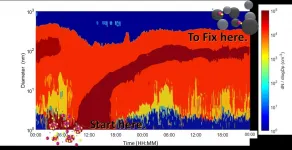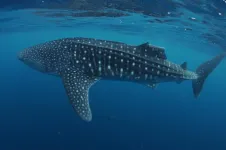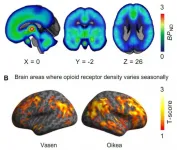New features of a gene defect that affects muzzle length and caudal vertebrae in dogs
Researchers discover new features of a gene defect that affects the length of the muzzle and caudal vertebrae in dogs
2021-02-23
(Press-News.org) A recent genetic study at the University of Helsinki provides new information on the occurrence of a DVL2 gene defect associated with a screw tail and its relevance to canine constitution and health. The variant was found in several Bulldog and Pit Bull type breeds, and it was shown to result in caudal vertebral anomalies and shortening of the muzzle. The DLV2 variant may also affect the development of the heart.
Dog breeding is often focused on appearance. In some breeds, the ideal body shape is bulky, with a broad head and short muzzle, short legs and a very short and kinked tail, also known as a "screw tail". In a previous study in the United States, screw tail was linked to a variant in the DVL2 gene. The variant has become enriched in English Bulldogs, French Bulldogs and Boston Terriers due to inbreeding. In addition to the shape of the tail, the DVL2 variant was suggested to contribute to other features typical of the above breeds, as well as what is known as the Robinow-like syndrome. However, its specific effects on body shape and health remained unclear at the time.
"In this study, we wanted to further investigate the frequency of the DVL2 variant in different dog breeds and determine its effects on skeletal development. The variant was identified in several Bulldog and Pit Bull type breeds, some of which had both the normal form and the genetic variant. This made it possible to investigate the consequences of the variant," says doctoral researcher Julia Niskanen from the University of Helsinki and the Folkhälsan Research Center.
The prevalence of the DVL2 variant varied greatly between breeds. All of the English Bulldogs, French Bulldogs and Boston Terriers in the study were homozygous for the variant, that is, they had inherited the variant from both parents. In other words, the normal form of the gene was not found in these breeds. Both the variant and the normal form were found in the American Staffordshire Terriers, Staffordshire Bull Terriers, Dogues de Bordeaux, Olde English Bulldogges and American Bulldogs.
To determine the effect of the variant on body shape, the researchers analysed the skeletal anatomy of American Staffordshire Bull Terriers of different genotypes through computed tomography scans carried out at the Veterinary Teaching Hospital. The results clearly showed that the DVL2 gene defect results in caudal vertebrae anomalies in homozygous state.
"However, tail abnormalities in the American Staffordshire Terriers were less severe than the screw tails typically seen in English Bulldogs, French Bulldogs and Boston Terriers. In contrast to the previous study, we did not find an association between the DVL2 variant and thoracic vertebral anomalies," says veterinarian and Clinical Instructor Vilma Reunanen from the Faculty of Veterinary Medicine, University of Helsinki.
Another main finding in the study was that the gene defect affects muzzle length in varying degrees. In homozygous dogs, the muzzle is significantly shorter than in heterozygous dogs, who only carry one copy of the gene defect. Similarly, heterozygous dogs have shorter muzzles than dogs that don't have any copies of the gene defect.
"In addition to the effects on the skeletal system, we discovered that several dogs homozygous for the DVL2 variant had a congenital heart defect. However, this is a preliminary finding that requires further study. If confirmed, it could partially explain the prevalence of congenital heart defects in certain breeds," doctoral researcher Niskanen adds.
"Besides the DVL2 gene defect, many breeds also have other genetic variants that affect body shape. Their combined effects may result in serious health problems. For example, a short muzzle predisposes dogs to brachycephalic obstructive airway syndrome (BOAS), whose symptoms include breathing difficulties and low exercise tolerance. The prevalence of the gene defect demonstrates that in certain breeds, DVL2-related health problems can be prevented with gene tests. In some breeds, there is no longer any variation, which makes it impossible to improve the situation with current breeding programmes," explains Docent Marjo Hytönen from the University of Helsinki and the Folkhälsan Research Center.
INFORMATION:
[Attachments] See images for this press release:

ELSE PRESS RELEASES FROM THIS DATE:
2021-02-23
According to recent estimates, there will be roughly 10 billion people to feed in 2050. Agricultural production will need to increase by almost 56% to guarantee food security globally, without converting more land for agriculture (in line with environmental and climate targets). This unprecedented challenge has ushered in the era of "smart agriculture," which promises to revolutionize food production by combining agricultural techniques with information technology, automation, and artificial intelligence. This new era, called "Agriculture 4.0," could ensure sustainable food production for the entire world. However, as communities gradually embrace smart agriculture, it is important to understand how to manage the security and privacy risks associated with the integration of ...
2021-02-23
Washington, DC / New Delhi, India - Researchers at CDDEP, in collaboration with leading experts in the field, have produced the "Infectious Diseases in the South-East Asia Region" report, which examines cross-boundary challenges in communicable disease control in countries in the South-and South-East Asia region. The report emphasizes infectious diseases related to other sources of disease burden in the region and communicates overall trends in the health and economic burden they impose.
Despite substantial progress in recent years, which has seen reductions in deaths from HIV and malaria and an increase ...
2021-02-23
Researchers of the University of Helsinki have resolved for the first time, how the ultrafine particles of atmosphere effect on the climate and health.
Atmospheric air pollution kills more than 10,000 people every day. The biggest threat to human health has been assumed to be the mass accumulation of atmospheric particles with diameter smaller 2.5 μm: the higher the mass and loss of visibility, the bigger the threat.
The researchers of the Institute for Atmospheric and Earth System Research (INAR) at the University of Helsinki together with collaborators in China discovered that if we want to solve the accumulation of the biggest particles, we need to start with the smallest.
Until recent ...
2021-02-23
A new study has for the first time explored the rate at which the world's largest fish, the endangered whale shark, can recover from its injuries. The findings reveal that lacerations and abrasions, increasingly caused through collisions with boats, can heal in a matter of weeks and researchers found evidence of partially removed dorsal fins re-growing.
This work, published in the journal Conservation Physiology, comes at a critical time for these large sharks, that can reach lengths of up to 18 metres. Other recent studies have shown that as their popularity within the wildlife tourism sector increases, so do interactions with humans and boat traffic. As a result, these ...
2021-02-23
Huntington's disease is caused by a mutation in the Huntingtin gene (HTT), which appears in adults and features motor, cognitive and psychiatric alterations. The origin of this disease has been associated with the anomalous functioning of the mutated protein: mHTT, but recent data showed the involvement of other molecular mechanisms.
A new study conducted by the University of Barcelona has identified a type of ribonucleic acid (RNA) as a potential therapeutic target for the treatment of the disease. These are the small RNA, or sRNAs, molecules that do not code proteins but have important functions in the regulation of gene expression. According to the study, sRNAs would ...
2021-02-23
X-ray scans revolutionised medical treatments by allowing us to see inside humans without surgery. Similarly, terahertz spectroscopy penetrates graphene films allowing scientists to make detailed maps of their electrical quality, without damaging or contaminating the material. The Graphene Flagship brought together researchers from academia and industry to develop and mature this analytical technique, and now a novel measurement tool for graphene characterisation is ready.
The effort was possible thanks to the collaborative environment enabled by the Graphene Flagship European consortium, with participation by scientists from Graphene Flagship partners DTU, Denmark, IIT, Italy, Aalto University, Finland, AIXTRON, UK, imec, Belgium, Graphenea, Spain, Warsaw ...
2021-02-23
Seasons have an impact on our emotions and social life. Negative emotions are more subdued in the summer, whereas seasonal affective disorder rates peak during the darker winter months. Opioids regulate both mood and sociability in the brain.
In the study conducted at the Turku PET Centre, Finland, researchers compared how the length of daylight hours affected the opioid receptors in humans and rats.
"In the study, we observed that the number of opioid receptors was dependent on the time of the year the brain was imaged. The changes were most prominent in the brain regions that control emotions and sociability. The changes in the opioid receptors caused by the variation in the amount of daylight could be an important factor in seasonal affective disorder," ...
2021-02-23
WASHINGTON -- Researchers have developed a new sensor that could allow practical and low-cost detection of low concentrations of methane gas. Measuring methane emissions and leaks is important to a variety of industries because the gas contributes to global warming and air pollution.
"Agricultural and waste industries emit significant amounts of methane," said Mark Zondlo, leader of the Princeton University research team that developed the sensor. "Detecting methane leaks is also critical to the oil and gas industry for both environmental and economic reasons because natural gas is mainly composed of methane."
In ...
2021-02-23
A new study suggests that a hormone known to prevent weight gain and normalize metabolism can also help maintain healthy muscles in mice. The findings present new possibilities for treating muscle-wasting conditions associated with age, obesity or cancer, according to scientists from the University of Southern California Leonard Davis School of Gerontology.
The research, published this month in the American Journal of Physiology-Endocrinology and Metabolism, addresses the related problems of age and obesity-induced muscle loss, conditions which can lead to increased risk of falls, diabetes and other negative health impacts. It also adds to a growing number of findings describing beneficial effects of MOTS-c, ...
2021-02-23
Scientists at the University of Adelaide have challenged the common assumption that genetic diversity of a species is a key indicator of extinction risk.
Published in the journal PNAS, the scientists demonstrate that there is no simple relationship between genetic diversity and species survival. But, Dr Joao Teixeira and Dr Christian Huber from the University of Adelaide's School of Biological Sciences conclude, the focus shouldn't be on genetic diversity anyway, it should be on habitat protection.
"Nature is being destroyed by humans at a rate never seen before," says computational biologist Dr Huber. "We burn ...
LAST 30 PRESS RELEASES:
[Press-News.org] New features of a gene defect that affects muzzle length and caudal vertebrae in dogs
Researchers discover new features of a gene defect that affects the length of the muzzle and caudal vertebrae in dogs







